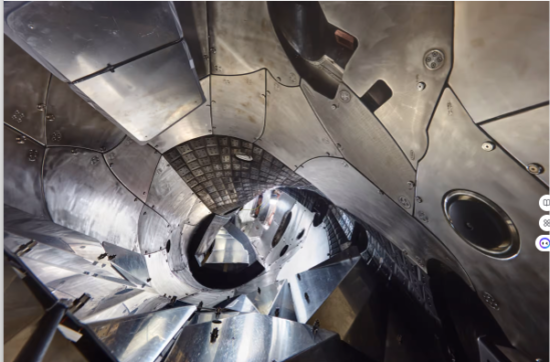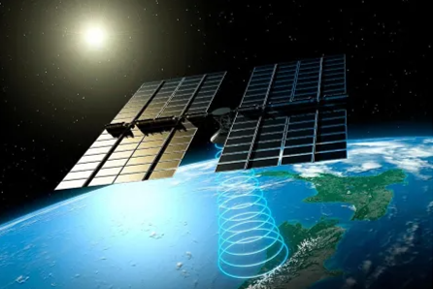Energy is front and centre in the news every day. That’s why I have decided to put together a weekly summary of some of the stories that have caught my eye. This week I include:
- The latest report from the International Energy Agency.
- A nuclear fusion milestone using the world’s largest stellarator.
- Iceland is to get solar power from space by 2030.
The IEA States We Are Entering The Age Of Electricity

According to the International Energy Agency’s latest report issued ahead of the upcoming meeting of nations at COP 29 in Baku, Azerbaijan, “low-emission sources” will generate more than half the electricity being produced before 2030.
The IEA report states that the age of coal is past, the age of oil is coming to an end, and that we are moving speedily “into the Age of Electricity.” The Age of Electricity will require the world to build a new energy system. It notes the “fundamental inequity” that must be addressed between the energy-rich Global North and the Global South, pointing to the 750 million in Sub-Saharan Africa who lack energy security today.
The IEA report includes information about an upcoming Global Conference on Energy and Artificial Intelligence to be held in Paris this December. A new energy system can use the power of AI to help optimize electricity distribution by predicting both supply and demand, particularly using renewable energy sources. AI can then help manage the distribution of electricity while reducing waste, particularly in countries with a tenuous grid infrastructure or where the electricity sources may be unreliable. AI can address energy inequities by optimizing the operation of microgrids and distributed energy systems in the absence of national grids.
The IEA report also announced the convening of an International Summit on the Future of Energy Security to take place in London in the second quarter of 2025.
Stellarator Hits 1.3 Megawatts Total Output

The promise of nuclear fusion energy has taken one step closer to reality with news from Germany’s Max Planck Institute for Plasma Physics about achieving a “world record” in total output using its Wendelstein 7-X, the world’s largest stellarator.
Partnering with the Thales Group, the Paris-based engineering company and developer of the TH1507U gyrotron, a high-power vacuum device contained in the Wendelstein, the stellarator can produce electromagnetic waves at terahertz frequencies to heat and stabilize high-temperature plasma at several million degrees to produce magnetic fusion.
I have previously written about several technologies in the race to develop viable commercial fusion. Tokamaks like the ITER project in France are the most common and leading the pack. Tokamaks, however, must be switched off periodically to remain stable which causes the fusion reaction to stop. Stellarators can operate continuously, however, and thus are seen as a good alternative.
Before the Thales gyrotron was incorporated into the Wendelstein stellarator project, the inherent problem for the nuclear reactor was its ability to hold the plasma in place within the confines of its twisting interior and the magnetic field (see picture above). But in the latest experiment, the gyrotron producing a frequency of 140 gigahertz demonstrated an ability to optimize the plasma in a controlled state. It is seen as a potential game changer in initiating nuclear fusion reactions within magnetic confinement.
In a press release last week, Charles-Antoine Goffin, Vice President of Microwave and Imaging Sub-Systems at Thales, stated, “The world record set by our Gyrotron marks a significant milestone in the race for fusion and illustrates our commitment to technological innovation and excellence. This technological breakthrough positions Thales at the forefront of high-power plasma heating solutions, essential for addressing the energy challenges of tomorrow.”
Based on the stellarator model, the Max Planck researchers believe they will need to install twelve gyrotrons like the TH1507U to create a working commercial fusion reactor.
Iceland’s To Beam Solar Power From Space to Earth

A British technology startup, Space Solar, is partnering with Transition Labs to deliver electricity from space to Reykjavik Energy, an Iceland utility. It will be the world’s first space-based solar power generating station with a capacity of 30 Megawatts. The plan is to have it operational by 2030.
The in-orbit power station will transmit captured solar energy by converting it into high-frequency radio waves sent to a receiving station on the ground where the transmissions will be converted to electricity to feed into the utility’s grid. The renewable power station will generate energy continuously unlike Earth-based solar photovoltaics that have to deal with night each day.
Transition Labs is based in Iceland. Carbfix, a subsidiary of Reykjavik Energy, will be the latter’s key partner. The United Kingdom has been studying hybrid renewable energy systems and sees space-based solar as a viable technology option. An independent 2021 study described the potential of space-based solar power generating up to 10 Gigawatts of electricity per year by 2050, meeting a quarter of the country’s electricity demand at that time.
Back in 2023, I wrote about a Caltech-designed prototype satellite, the Space Solar Power Demonstrator (SSPD), that demonstrated how solar energy could be harvested in space and beamed to Earth.
Now space-based solar power is moving from the laboratory to commercial viability and the race is heating up with China hot on the tail of the Iceland project.
Partners Transition Labs, Space Solar and Carbfix are now exploring ground-based receiving stations for future solar energy beamed from space projects including sites in Canada and Japan.









